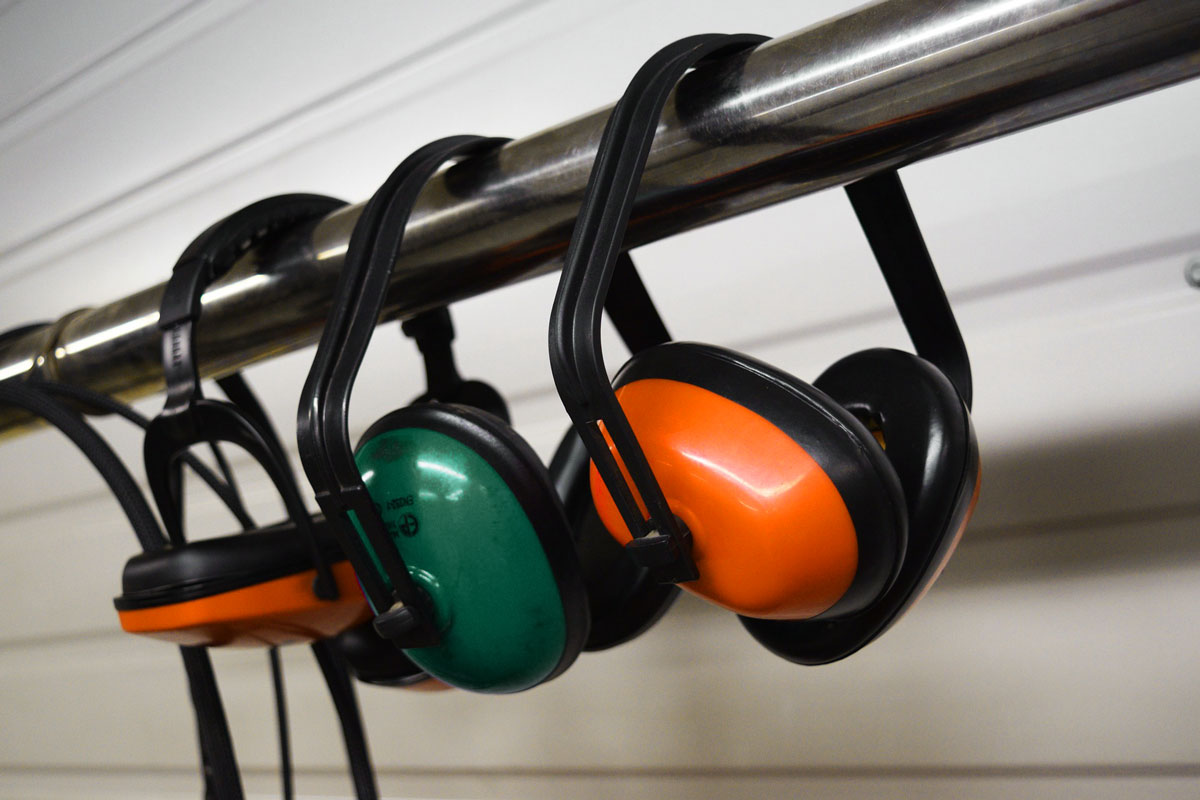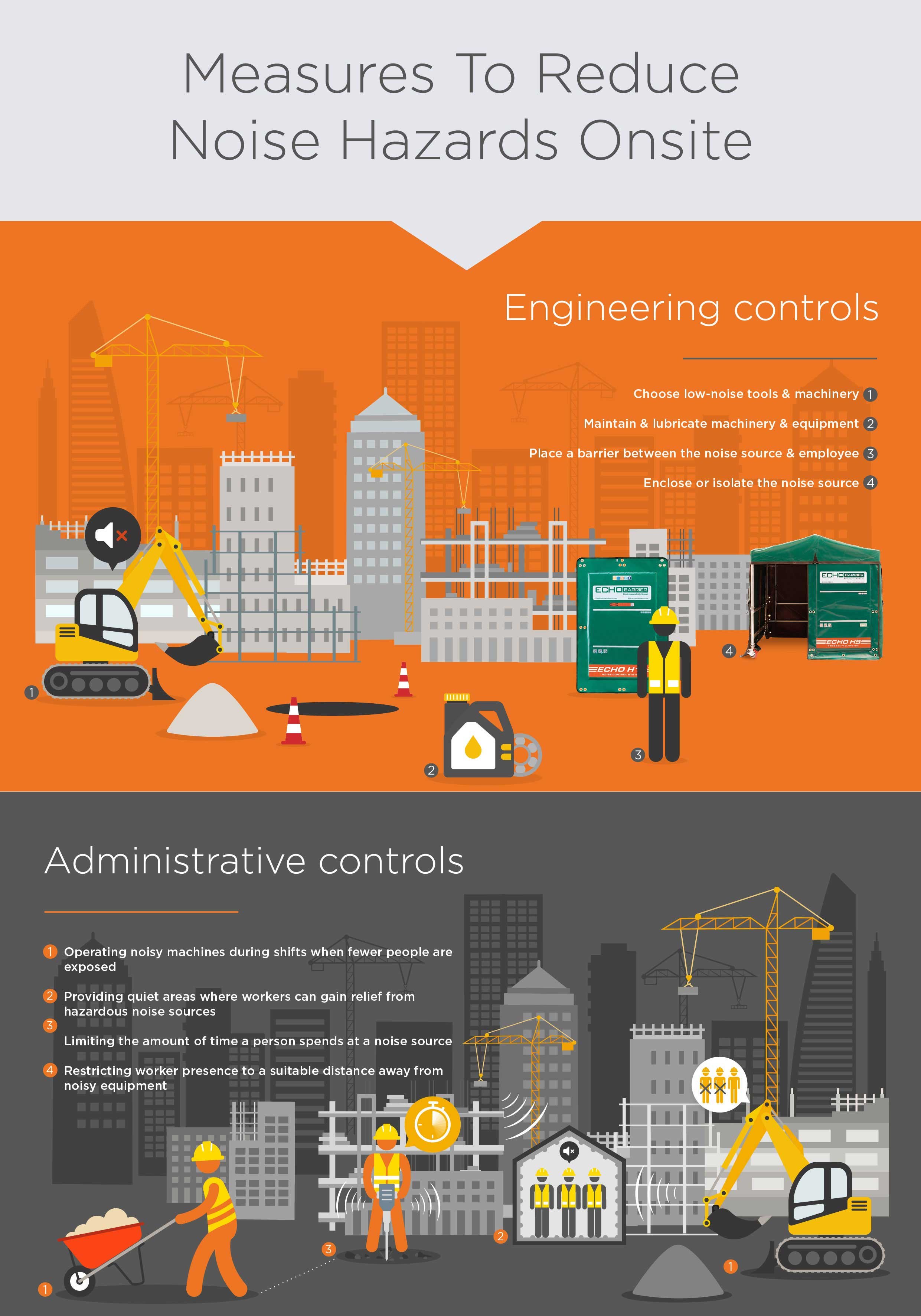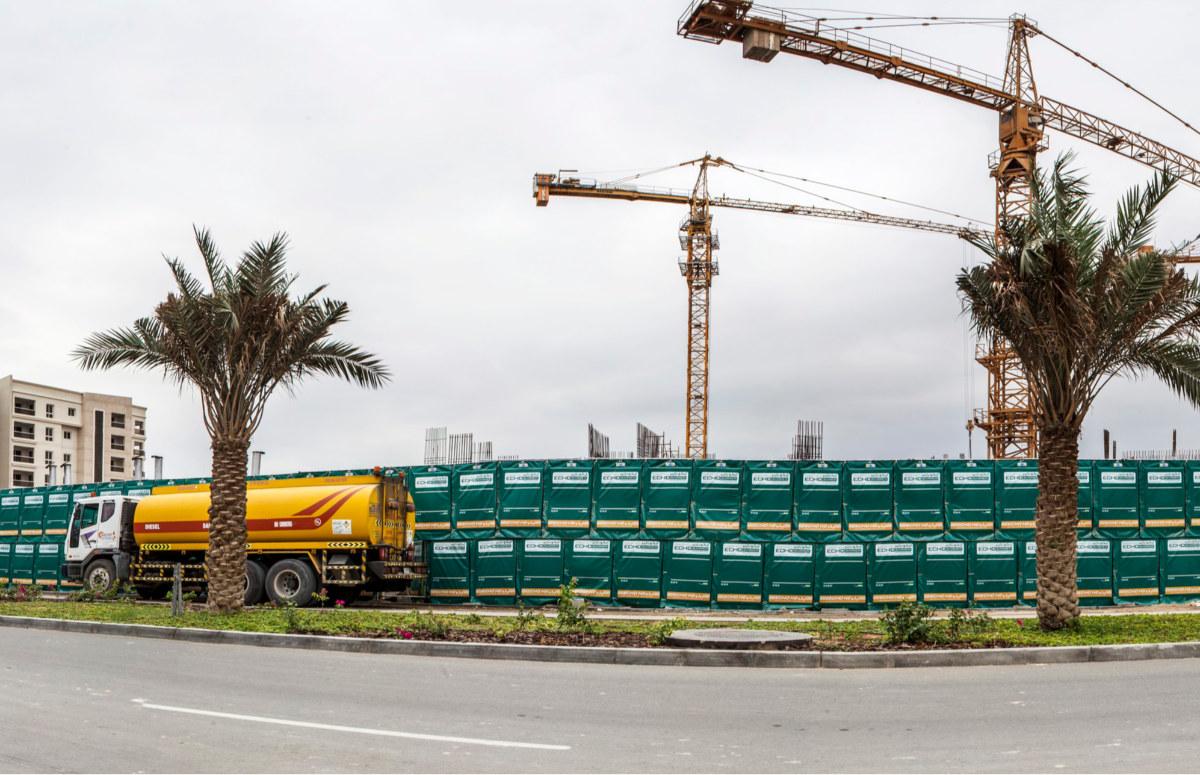
Just like other worksite hazards and health risks such as spills, chemical exposure, falls, heat and radiation exposure, and physical strain, it is necessary to address noise exposure risks for employee safety and legal responsibility. This is what can be done to reduce noise hazards on a worksite.
Ways of reducing worker exposure
According to the Occupational Safety & Health Administration, there are several engineering and administrative controls that can be implemented to reduce worker exposure to noise:

Engineering controls
- Choose low-noise tools and machinery
Resources like the Buy Quiet Roadmap help end users made smart decisions towards hearing conservation in the workplace. - Maintain and lubricate machinery and equipment
Taking measures to ensure mechanical friction is minimized will help keep noise levels down. - Place a barrier between the noise source and employees
Sound mitigating barriers like Echo Barrier are constructed to dramatically reduce noise levels while being lightweight and portable. - Enclose or isolate the noise source
Echo Barrier enclosures contain noise sources and reduce their impact on the worksite, perfect for cutting, drilling, and welding activities.
Administrative controls
- Operating noisy machines during shifts when fewer people are exposed
Careful scheduling can reduce the impact of noise on everybody. - Limiting the amount of time a person spends at a noise source
Closer monitoring of time spent operating noisy machinery and changing shifts between workers more frequently. - Providing quiet areas where workers can gain relief from hazardous noise sources
Construct a soundproof room or area where workers' hearing can recover, depending upon their individual noise level and duration of exposure, then monitor time spent in the quiet area. - Restricting worker presence to a suitable distance away from noisy equipment.
Maintaining distance from a noise source is an effective way to reduce workers' level of exposure.
Using barriers to divide a noise source and employee
Echo Barriers are designed to be a fast and effective engineering control to implement against noise hazards on a site. Simply stand the length of any temporary structure perpendicular to the direction of the noise between the noise source and the exposed parties, and mount the barriers with the plain side facing the noise source. This side of an Echo Barrier absorbs the noise (up to 100% at the 500 Hz range), while reducing noise passing through to the other side by up to 43 dB.
Read: A Guide To Correct Use Of Echo Barriers

Echo Barriers are certified UV, fire, and water resistant, manufactured to by hand to withstand the toughest work environments. Get in touch with us to learn more:
